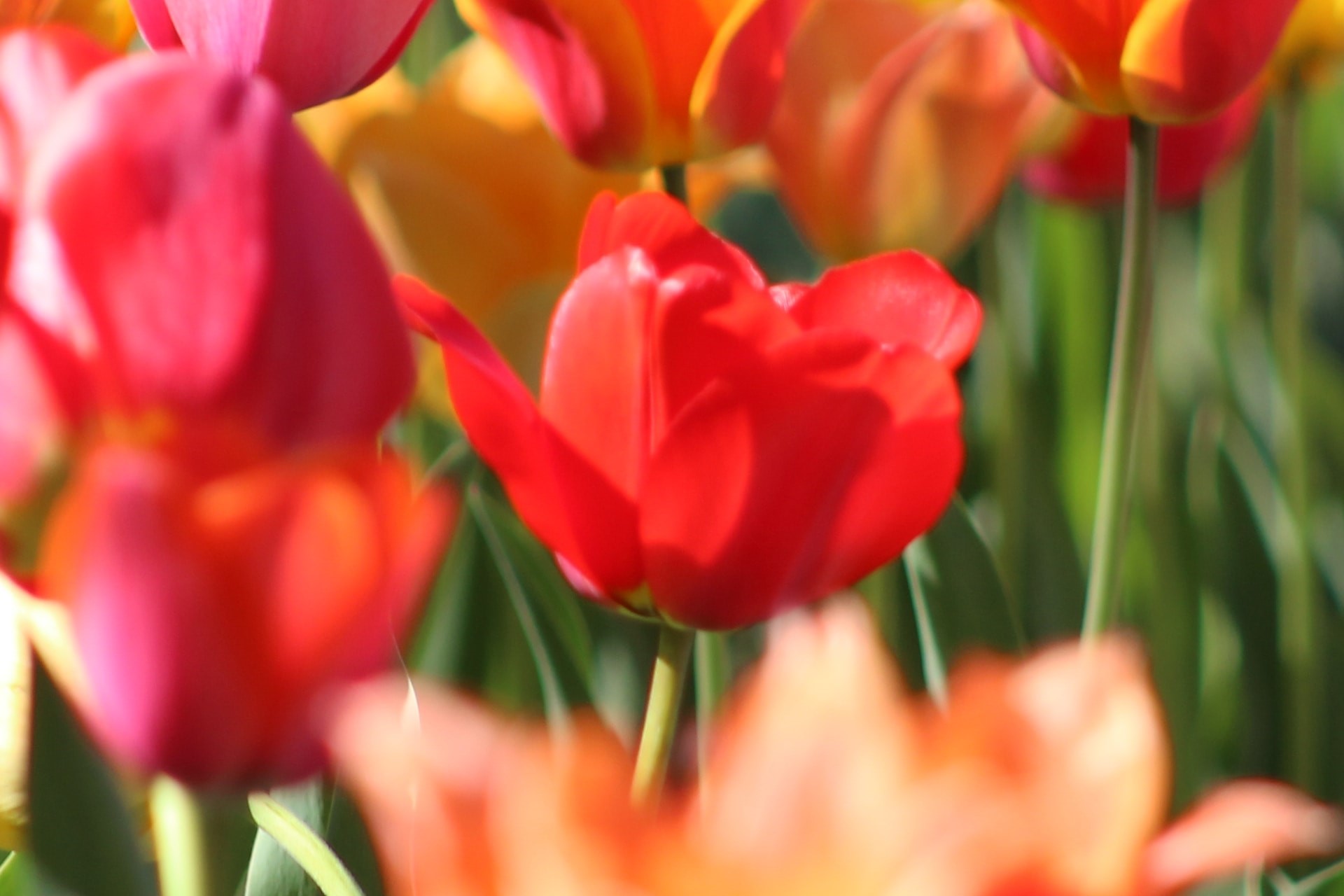
How to Start a Flower Garden
We are reader-supported. When you buy through links on our site, we may earn affiliate commission.
How to start a flower garden? A flower garden is a vibrant tapestry of nature’s beauty, a carefully curated space where blossoms of various hues and shapes intertwine to create a visual symphony.
It’s more than just a mere collection of plants. A flower garden is a testament to the artistry of cultivation, allowing individuals to transform outdoor spaces into living canvases.
Importance of Starting a Flower Garden
The importance of flower gardens extends beyond their mere aesthetics. Flower gardens are significant in various life aspects, contributing to personal well-being and the environment. Here are some reasons why starting a flower garden is essential:
- Support for pollinators: Flower gardens attract pollinators such as bees and butterflies, playing a crucial role in supporting biodiversity. Animal pollinators are crucial for reproducing 35% of the world’s food crops. More than 3,500 types of native bees play a vital role in increasing crop yields. By providing a habitat and food source, the garden contributes to the health of local ecosystems.
- Contribution to sustainable practices: Gardens use sustainable and eco-friendly practices such as composting, rainwater harvesting and organic gardening. This promotes environmental responsibility and conservation.
- Community building: Flower gardens create opportunities for community engagement. Shared gardening spaces or local garden clubs foster community, encouraging social interaction and connection among neighbors.
- Cultural and symbolic significance: Flowers often hold cultural and symbolic meanings. Growing specific flowers can be a way to celebrate cultural heritage, express emotions or commemorate significant events, adding depth and personal significance to the garden.
- Seasonal changes and delight: Flower gardens undergo dynamic transformations with each season, offering a variety of blooms and colors. This cyclical change brings joy and anticipation, connecting individuals to the natural rhythm of the environment.
Benefits of Starting a Flower Garden
- Aesthetic pleasure: Flower gardens add color and visual appeal, creating beautiful, serene spaces that uplift the human spirit and enhance the overall aesthetics of homes and public areas.
- Mental and emotional well-being: Tending to a flower garden has therapeutic benefits—reducing stress and anxiety and promoting a sense of calm. Nurturing plants fosters a mindful connection with nature, positively impacting mental health.
- Educational opportunities: Flower gardens provide a hands-on environment for learning about plant life cycles, ecosystems and the interdependence of various species. This educational aspect is valuable for both adults and children.
- Promotion of physical activity: Engaging in gardening activities, from planting to weeding, offers a form of low-impact exercise. This physical activity promotes a healthier lifestyle and individuals can enjoy varying fitness levels.
- Expression of creativity: Designing and cultivating a flower garden allows individuals to express their creativity. Choosing specific flowers, layouts and themes provides a canvas for personal artistic expression.
Planning a Flower Garden
So, how to start a flower garden? Planning a flower garden involves thoughtful consideration of various elements. Here are some things to consider:
Choosing the Right Location
Evaluate the amount of sunlight the area receives throughout the day. Choose a location that aligns with the sunlight requirements of the selected flowers.
Consider how easily accessible the garden is for maintenance and enjoyment. Optimal locations are those that enhance the overall usability of the outdoor space.
Assessing the soil composition, drainage and fertility is also essential. Different flowers have specific soil preferences, so the location should match the chosen plants’ needs.
Awareness of microclimates within the garden is also crucial as they affect temperature and humidity. The location should be adjusted based on these microclimates to accommodate flowers with specific climate requirements.
Lastly, consider the visual impact on the overall landscape. It should complement surrounding elements, creating a harmonious and pleasing garden design.
Selecting Appropriate Flowers
Close to 50% of Australia’s flowers face a high risk of extinction. In India, nearly a fourth of the plants are also endangered. Initiating a flower garden can contribute to preventing the extinction of these vulnerable species.
In selecting flowers for a garden, one should prioritize climate suitability, considering local weather conditions to ensure that chosen flowers can withstand temperature fluctuations.
Aesthetic preferences are crucial, encouraging gardeners to select flowers that align with their desired garden look. This can be a vibrant burst of color or a more subtle and elegant display.
Maintenance level is also a key consideration when evaluating the time and effort one is willing to invest in garden upkeep. This leads to a choice between low-maintenance perennials or more demanding annuals.
Planning for a continuous display of blooms throughout the seasons is also essential. Individuals may achieve this by selecting various flowers with staggered bloom times.
Examples of Flowers
Choose complementary varieties while considering factors like height, color and texture to create a balanced mix that enhances the overall visual appeal of the flower garden. Here are some examples of flowers to get started:
- Roses (Rosa): Classic and elegant, available in various colors and varieties. Suitable for a formal garden or as a focal point in landscaping.
- Sunflowers (Helianthus annuus): Bright and cheerful, thriving in full sunlight. It is ideal for adding a vibrant touch to the garden and attracting pollinators.
- Marigolds (Tagetes): Vibrant and easy to grow, available in warm hues. Perfect for borders, adding a pop of color and deterring pests.
- Lander (Lavandula): Fragrant and drought-tolerant, with aromatic purple spikes. It adds a touch of relaxation and suits well in herb gardens.
- Petunias (Petunia): Versatile and available in various colors, suitable for containers or hanging baskets. Thrive in full sun and bring a cascading beauty to the garden.
- Impatiens (Impatiens walleriana): Shade-loving annuals with a variety of colors. It is ideal for adding vibrant blooms to areas with partial shade.
- Tulips (Tulipa): Spring-blooming bulbs in a range of colors. Perfect for creating a stunning display in flower beds or as cut flowers.
- Hydrangeas (Hydrangea): Large, showy blooms with colors influenced by soil pH. Great for adding a touch of elegance to shaded areas.
Essential Tools and Materials
Gather essential tools like trowels, pruners and gloves for effective planting and maintenance. Invest in high-quality tools to make gardening tasks more efficient and fun.
Having the suitable soil for the flowers and considering factors like drainage and nutrient content is paramount. Make sure to have the appropriate fertilizers to promote healthy growth and vibrant blooms.
Mulch helps retain soil moisture and suppress weeds, so choose the suitable type for the garden. Invest in watering equipment such as hoses or drip irrigation systems to ensure proper hydration.
Maintenance and Care
Maintain a consistent watering schedule to support plant health. Adjust the watering frequency based on weather conditions and seasonal needs.
Pruning encourages healthy growth and shape. It removes dead or damaged parts. Deadhead uses flowers to promote continuous blooming and a tidy appearance.
Follow a fertilization schedule appropriate for the flowers. Amend soil as needed to address nutrient deficiencies and ensure optimal soil health.
How to Start a Flower Garden
So, how to start a flower garden? Take a moment to reflect on the journey of planning, planting and caring for the flower garden.
Use the journey as motivation for exploring different flowers, designs and gardening techniques. Appreciate the growth, beauty and personal connection that will flourish throughout this gardening experience.
Share on
Like what you read? Join other Environment.co readers!
Get the latest updates on our planet by subscribing to the Environment.co newsletter!
About the author
Jane Marsh
Starting from an early age, Jane Marsh loved all animals and became a budding environmentalist. Now, Jane works as the Editor-in-Chief of Environment.co where she covers topics related to climate policy, renewable energy, the food industry, and more.





